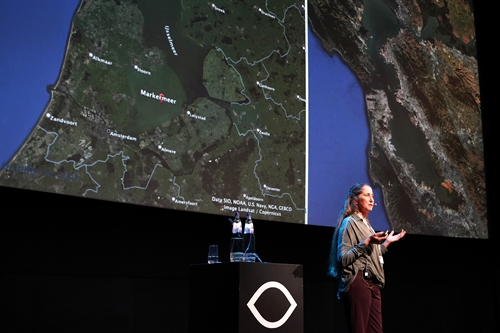“Sediment is a highly underestimated building block”
Brenda Goeden, program manager at San Francisco Bay Conservation and Development, shares examples of ecosystem restoration through the reuse of sediment in California. In San Francisco Bay Area many plans were launched to change the natural dynamics of the estuary and most of them involved large-scale land reclamation.
One of the plans was to fill the bay with sediment to change it to a river system, tells Goeden who is happy the plan never came through. “A huge scale model of the bay with all the streams was built, which helped not to go through with this plan.”
[text continues below image]

Wetlands under threat
Sediment in the bay plays a key role and, unlike the Markermeer, the estuary has strong tidal streams. An interesting detail is that mining during the gold rush in the 19th century led to a lot of excess sediment in the bay. In the past decades, the sediment influx fell dramatically. “This resulted in the loss of most of the wetlands and makes it very hard to sustain the salt marshes,” explains the sediment expert.
The current projects in the bay no longer have a focus on land reclamation but are targeted at restoring wetlands. A lot of dredging is done in the bay, but most of the sediment is dumped in the sea. “This is such a waste as sediment is a highly underestimated building block for ecosystem recreation. By now we manage to reuse 40 per cent of all the dredged sediment, but we plan to get that percentage up.”
Nature-based Solutions
One of the wetland restoration projects she shares is the Sonoma Baylands. This is a semi-artificial marsh that was filled with mud and at the same time hard structures to stimulate sedimentation. “This is now an extremely healthy marsh. Even the biggest sceptics are now convinced that it is one of the most successful projects they have seen.”
Restoring habitat always has been the main goal of the San Francisco Bay Conservation and Development organization. “Now we are facing increasingly fast sea level rise which brings new challenges. Every now and then people suggest closing the bay. We turn to Nature-based Solutions rather than to hard structures.”